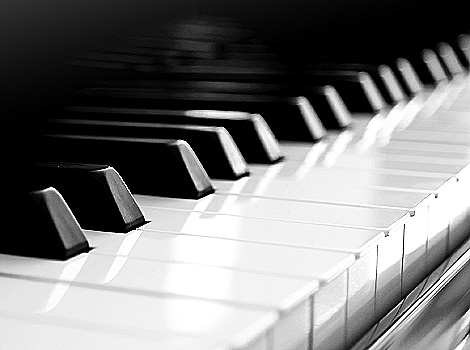钢琴是最佳乐器 大问题系列:作曲家迈克尔·伯克利认为没有乐器比得上钢琴,钢琴可以变出鸟儿的歌声,也能够表现出沉落的教堂…… From INTELLIGENT LIFE magazine, May/June 2012 确实,和吉他、提琴或是笛子不同,你没有办法把它塞在手提箱里。但是钢琴可以打开整个音乐世界,因为只有钢琴可以表达交响乐谱或是声乐谱上所有的和音音域。一架史坦威或是蓓森朵夫尽情弹奏时那发自内心的音质是无法比拟的,它可以在瞬间从响亮的打击声转变成温暖的抒情乐。 大多数作曲家都把钢琴视为在实际写下谱子之前尝试各种作曲构思最好的方法。斯特拉文斯基一定要有键盘乐器在身边为作曲提供某种声音反馈。声音音质好坏对他来说并不重要,实际上他会在钢琴里塞入毛毯来降低音量。如果放在今天,他可能有一架雅马哈电子琴就足够了,这对哪些家里没有地方或是囊中羞涩的音乐家来说真是一件幸事。 钢琴的独奏曲数量之大超过任何其它乐器。梅西安、德彪西和拉威尔这些作曲家曾用钢琴诠释过鸟儿的歌唱声,神秘的沉落教堂,以及在汨汨流水上洒下的耀眼阳光。当我在工作中找不到灵感时我会演奏巴赫,将头脑和心灵完美地结合起来,于是秩序会被重塑,思路又复畅通。 此外还有那令人震惊的音域范围——八个八度,你可以从低音提琴和低音大管的无底深渊一直弹到短笛和小提琴泛音的九霄云外。钢琴本质上是一部放在木盒子里的竖琴,只不过不是靠手指来拨弦,而是靠琴槌来敲弦。现代作曲家经常要求演奏者把手伸到琴箱内直接拨弦或是拿棍子击打琴弦。在琴弦上或是琴弦之间放上硬币、螺丝刀或是纸张可以引出美妙的金属声或是颤动声。这种技巧称为“预置钢琴”。钢琴技师和调音师对其深恶痛绝,他们无法忍受自己的孩子以这种方式被侵犯。但是,这些技巧加上钢琴持续在摇滚乐和爵士乐中的使用,都标志着这种乐器还有大量的潜力有待发掘。 迈克尔·伯克利是作曲家兼电台主持人。他从位于伦敦的自宅主持BBC三台的《内心热情》节目已有15个年头。 |

 RimskyKorsakov- Flight of The Bumble Bee 林姆斯基高沙可夫:大黄蜂飞行.mp3
(3.09 MB, 下载次数: 288)
RimskyKorsakov- Flight of The Bumble Bee 林姆斯基高沙可夫:大黄蜂飞行.mp3
(3.09 MB, 下载次数: 288)
 Variations on the Kanon by Pachelbel.mp3
(4.94 MB, 下载次数: 57)
Variations on the Kanon by Pachelbel.mp3
(4.94 MB, 下载次数: 57)
 Wedding Rain.mp3
(7.85 MB, 下载次数: 66)
Wedding Rain.mp3
(7.85 MB, 下载次数: 66)
坏娃娃 发表于 2012-6-2 17:37
no other instrument is quite like the piano, which can conjure up sounds from birdsong to a sunken c ...
 |网站地图|手机版|小黑屋|关于我们|ECO中文网
( 京ICP备06039041号 )
|网站地图|手机版|小黑屋|关于我们|ECO中文网
( 京ICP备06039041号 )
GMT+8, 2025-12-16 06:44 , Processed in 0.118115 second(s), 36 queries .
Powered by Discuz! X3.5
© 2001-2025 Discuz! Team.